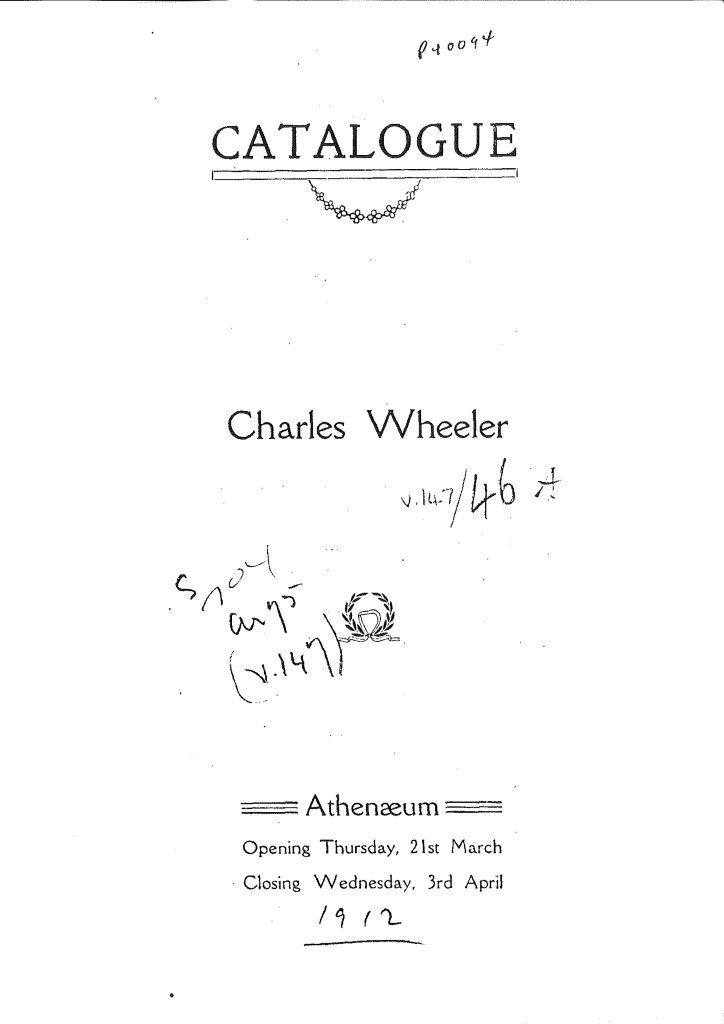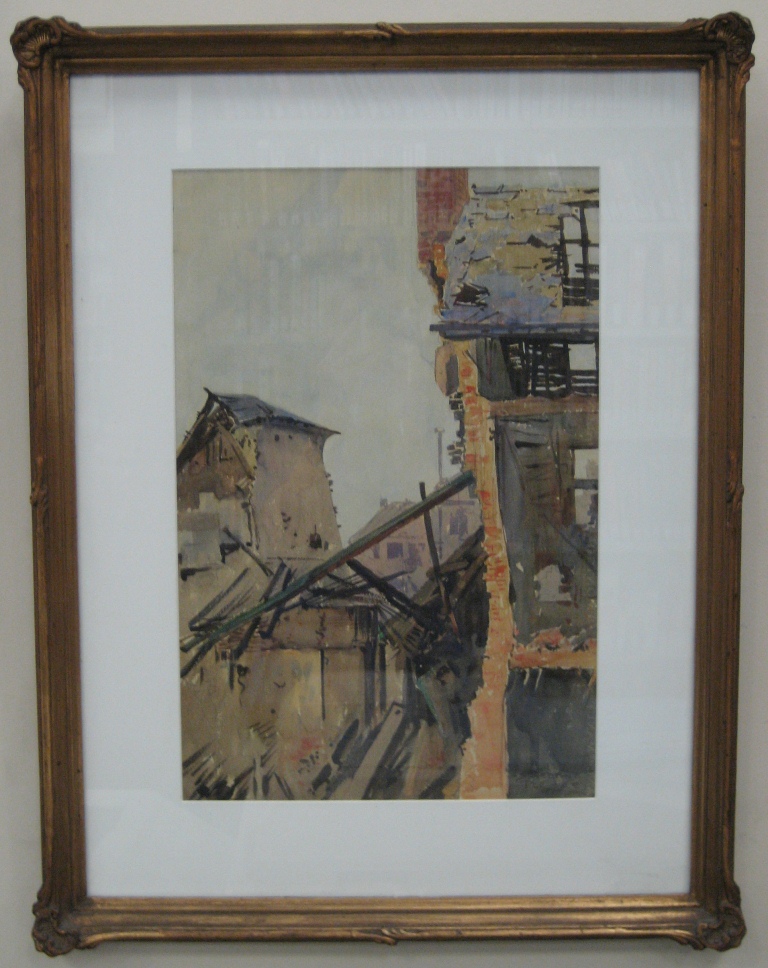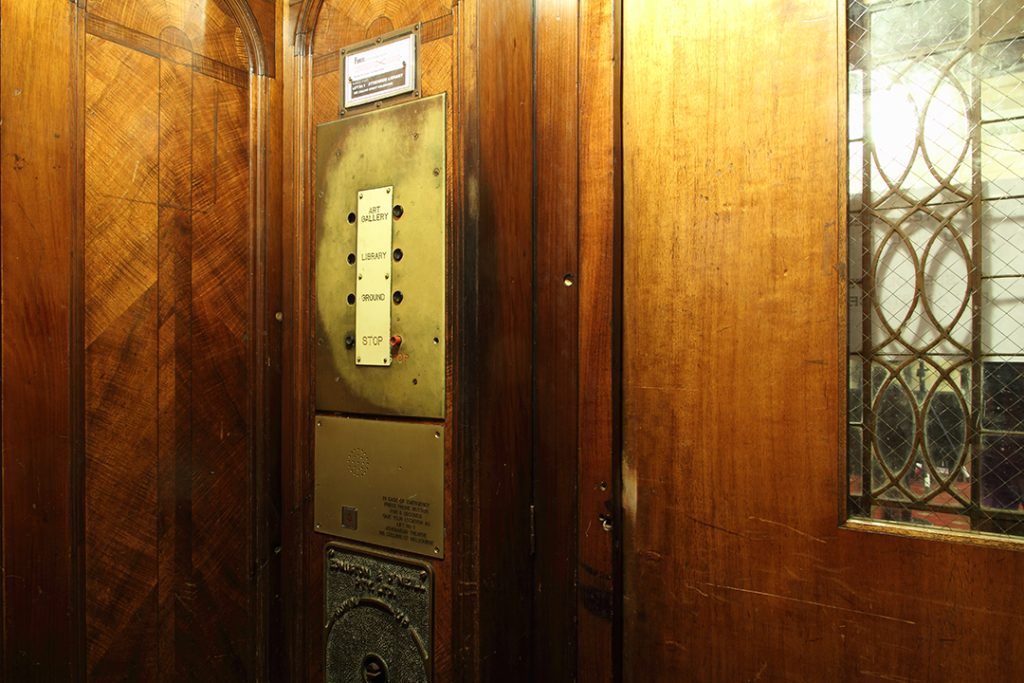The Melbourne Athenaeum Library will be closed on Monday June 9 for the King's Birthday public holiday.
The art gallery was established in May 1910 as a result of a dialogue between the institution's secretary, R.W.E. Wilmot, and artists Walter Withers, Bernard Hall, Fred McCubbin and John Mather. The artists suggested that the interior should be designed to best feature the paintings through the use of top lighting. Wilmot contacted the Victorian Artists Society, which offered to rent the gallery for their annual eight-week exhibitions.
In 1910 architects Sydney Smith and Ogg supervised contractors Messrs Spargo and Taylor, who constructed a lantern light in the roof to convert the upper hall into a picture gallery. In the spring of that year the venue was let to Mrs Walter Withers, Bernard Hall, T.C. Lothian and The Victorian Artists Society to exhibit their works.
The following year the gallery continued its successful exhibitions featuring the Yarra Sculptors, Mrs Mather, Mrs Anderson, Messrs McCubbin, Montague Brown, Rupert Bunny and Blamire Young, and Miss Asquith Baker. The art gallery also held the annual exhibition of the Victorian Artists Society and these events, along with artists' exhibitions, secured the art gallery's relevance and significance to the Melbourne art scene in the early twentieth century.

The Athenaeum Gallery continued its success in 1913 and was fully booked for the year. Further work, commissioned to improve the lighting of the east and west walls and extending the lantern light, was completed by the opening on the season in February. In 1914 a number of exhibitions were presented at the Art Gallery, as well as successful group exhibitions, including the Australian Artists Association and Twelve Melbourne Painters. Among the individual exhibitors, Arthur Streeton is recognised as one of the most influential Australian painters of the era.
Despite the art gallery's success with numerous national and international exhibitions, it was not immune to the impact that the First World War had on Australia. This was responsible for the loss of revenue and led to the cancellation of various exhibitions in the upper hall.
In response to the war, the Athenaeum's Management Committee allowed Melbourne artists to exhibit their work without having to pay, raising more than £600 for the Red Cross Society.
By 1919 the art gallery needed some renovation and redecoration. Following its transformation, English-born painter James Clarke Waite reopened the gallery with an exhibition of his work.
In 1921 the art gallery resumed its success, featuring exhibitions of oils and watercolours by various well-known artists. The secretary, Mr Wilmot, arranged for the designs in a competition for a War Memorial Hall, planned for Melbourne Grammar School, to be exhibited. In 1922, a Loan Gallery of Works of Art in the Library was established. Artists who had leased the gallery and who were then invited to lend their pictures for exhibition in the library included Arthur Streeton, George Coates, Dora Meeson, Dora Wilson and John Rowell. A painting by John Rowell still hangs in the library.
The 1922 annual report gave a glowing account:
The popularity of the art gallery - now fully recognised as the art centre of Melbourne - has been maintained. During the year exhibitions were held by Mrs C. Hampbell, J. Jackson, R.W. Buggy, M. O'Connell, W.D. Knox, Chas Wheeler, R.W. Sturgess, A. McClintock, Penleigh Boyd, John Rowell, Max Meldrum, E. Hooton, A. Sennitt, E. Latimer, Meynell Withers, Mrs Sheard, Miss James, Miss Sweatman, Miss Bale, Miss Trail, Twenty Melbourne Painters, Women's Art Club, and the Commercial Artist's Association. For the current year there is not a vacant date, and there are several bookings already made for 1924.
In the ensuing years the art gallery continued its success with numerous exhibitions. Seasons were fully booked and the gallery served to communicate the endearing and influential style of Australian art. During this time, while excavating for a new building, an art potter, Mr Merrick Boyd, found clay that would be suitable for pottery. The physical transformations of the art gallery led to further discoveries and allowed for a rediscovery of art.
Arthur Streeton was one artist who had a strong connection to the art gallery. On September 3, 1926, the committee accepted a gift of the painting 'Ruin at Peronne' and expressed its gratitude for the gift by electing Streeton to be an honorary member of the institution. This beautiful watercolour painting, still in its original ornate frame, remains on display in the Athenaeum Library.

The year 1930 was significant as it included the installation of an electric lift, which would provide access to the library and art gallery. The cost was £3002/14/-. This development increased attendance and made the exhibitions and events easier to attend. Today the lift is still in working order and a pencilled portrait of R.W.E. Wilmot by George Coates sits on the wall in the library, opposite the lift.
